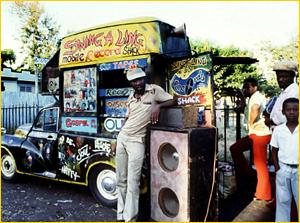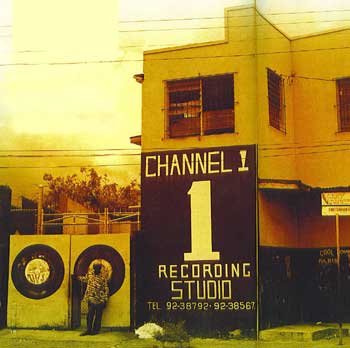
 |
CLOSE WINDOW |
Foundations
of Reggae Music
![]() Go to Part Two or Part One
Go to Part Two or Part One
Much of this
"history" is included in the notes for "This
is Reggae Music: The Golden Era 1960-1975" - a four CD set that provides a
great musical overview of the genre - the selections and sound quality are
excellent through out - a vital Ras John Reggae12.com Pick!
Part Three: REGGAE INNA BABYLON
 |
Nothing
epitomizes the cultural divide between the |
| Desmond
Dekker (read more
about Desmond Dekker) became a one-hit-wonder in 1969 with "Israelites," and Jimmy
Cliff (read more about
Jimmy Cliff) scored hits in 1969 and 1970 with "Wonderful World, Beautiful
People" and "Come Into My Life." It was just enough activity for
Rolling Stone to want to know what was going on. Reporter Courtney Tulloch went
to
|
|
|
|
The
upturn began in 1972 when Houston-based Johnny Nash returned from  Then, in July 1972,
The Harder They Come
movie opened in the Then, in July 1972,
The Harder They Come
movie opened in the |
|
|
Reggae
truly came above ground in 1974 when Eric Clapton topped the charts with Bob
Marley's "I Shot The Sheriff." (read
more about Bob Marley) When Johnny Nash had recorded Marley's
songs a couple of years earlier, it hadn't don |
| Marley
became Reggae's iconic presence, but had not long to linger. Neither did the
music as it is heard here. By the mid-1970S, change had come. The deejays were no longer a passive presence; they
took the backing tracks (often the B-sides of singles), and "dubbed"
over the top, pointing straight toward contemporary urban music. Reggae split
into subsets and the songs became m
ore politicized, reflecting the open warfare that led travel agents to advise
against even setting foot in |
 |

Listen to Delroy Wilson's "Better Must Come" from this collection. "Protest music identifies inequities, calls for their eradication, and offers avenues in to a more perfect future. Here are some of the best ever, mixing decades and styles and artists alll of whom have one common purpose, nothing less than changing the world. The message is clear and it will always remain strong. A luta continua!" Roger Steffens |
Trojan Records has been a big part of the Story of Reggae music and for fans around the world, it is a wonderful thing that they has started to mine their archives of classic Reggae. Reggae Pulse 5: Protest Songs is a great collection for everybody - the only reason not to get it would be that you already have all the songs in your collection - even so, everyting has been nicely re-mastered and sounds really good. This is a HITS collection with many of the selections some of the best material ever released by the various artists: Third World's "96° In The Shade", Junior Reid's "One Blood", Black Uhuru's "Solidarity", Beres Hammond's "Putting Up Resistance", Perer Tosh's "Get Up, Stand Up", Hugh Mundell's "Africa Must Be Free by 1983" and Israel Vibrations' "Same Song". These are CLASSIC Tracks by anyone's measure. Then add some great covers of 60's Rock Protest songs: Luciano doing "Eve of Destruction", Freddie McGregor doing "For What It's Worth", YVAD covering Buffy St. Maries' "Universal Soldier" and Don Carlos doing Dylan's "Blowin' In The Wind". There's more! You can listen to Delroy Wilson's "Better Must Come" by clicking the link to the left or use the Amazon.com link next to the album cover to get samples and a full track listing. This is a worthy part of the Story of Reggae Music because it does such a fine job of chronicling the voice of FREEDOM and humanity that REGGAE Music has always put a spotlight on. Roger Steffen's provides some great liner notes for the collection and the production work of Doctor Dread and Bas Hartong are to be congratulated. Thanks for this time capsule of the Story of Reggae Music! |
| Part
Three of A History of Reggae Music from "This
is Reggae Music: The Golden Era 1960-1975" Editorial Reviews |
![]() Go BACK to Part Two or Part One
Go BACK to Part Two or Part One